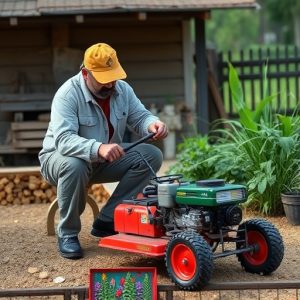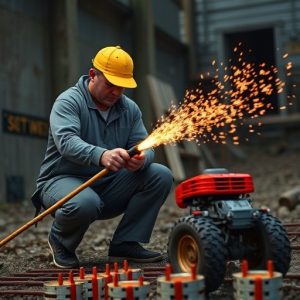Kubotan vs Pocket Stick: A Comparative Guide on Effective Self-Defense Tools
The Kubotan is an effective self-defense tool used in martial arts like Aikido and Karate, offering…….
The Kubotan is an effective self-defense tool used in martial arts like Aikido and Karate, offering users an extended reach and increased strike power with its pen-like design. Unlike traditional pocket sticks, the Kubotan's compact form allows for precise strikes and control. Its advantages include easy concealment, targeted impacts, and specific techniques such as locks and grapples. Mastery of the Kubotan requires dedicated practice, understanding its applications, and recognizing its superiority in certain defensive contexts. How to use a Kubotan effectively involves integrating it with hand movements, simulating real-life encounters through drills, and applying pressure at specific body points for non-lethal incapacitation. Advanced practitioners focus on disarming tactics and leveraging human anatomy for effective self-defense. The choice between a Kubotan and a pocket stick—the latter being longer and more versatile—should consider individual hand size, the context of confrontation, and legal implications. Consistent training is key to incorporating these techniques into one's self-defense strategy, ensuring they are ready for critical situations. The section emphasizes the importance of specialized applications and targeted training for proficiency with the Kubotan.
When it comes to self-defense tools, the Kubotan and pocket stick are often compared for their effectiveness in personal protection. In this comprehensive guide, we’ll explore the nuances between these two instruments, offering insights into how to use a Kubotan and the advantages it holds over a pocket stick. From understanding the Kubotan’s design and purpose to mastering its techniques, readers will gain a clear perspective on the art of Kubotan self-defense. Whether you’re a seasoned martial artist or new to the realm of self-defense tools, this article will serve as an invaluable resource for enhancing your skills and knowledge.
Understanding the Kubotan: A Guide to Its Usage and Advantages Over a Pocket Stick
The Kubotan is a self-defense tool that has gained popularity among martial artists and civilians alike for its versatility and effectiveness in various combat situations. It’s a short, pen-like stick with a blunt end, designed to extend the range and power of hand techniques. When integrated into martial arts training such as Aikido or Karate, practitioners learn how to use a kubotan to deliver strikes, control an opponent’s limbs, and defend against threats. Its small size allows for easy carry and deployment, making it an accessible option for self-defense.
Compared to a traditional pocket stick, which may be longer and less precise, the Kubotan offers several advantages. The compact design of the Kubotan facilitates more refined control and precision during training or in real-world scenarios. This precision can lead to more effective self-defense maneuvers that are better targeted and deliver a stronger impact without unnecessary force. Additionally, the Kubotan’s size and weight are conducive to mastering certain techniques, such as locks, grapples, and strikes, which can be more challenging with a bulkier pocket stick. Understanding how to use a kubotan involves not only its application in self-defense but also recognizing its advantages over other defensive tools, thereby enhancing one’s personal safety and situational awareness.
The Differences Between Kubotan and Pocket Stick: A Comprehensive Comparison for Self-Defense Practitioners
The Kubotan and pocket stick are both effective self-defense tools that have their unique applications and training considerations. The Kubotan, developed by the martial artist Takayuki Kubota in the 1960s, is a short, thick stick approximately six inches long with a rounded tip. It is designed to be used in conjunction with traditional karate techniques, providing a means to deliver powerful strikes while offering additional control over an assailant. Proficiency in how to use a Kubotan involves understanding its precise applications, such as pressure point strikes and disarming techniques, which can incapacitate an attacker without causing long-term harm.
In contrast, the pocket stick is a more recent innovation, designed for everyday carry and ease of use. It is typically longer and slimmer than the Kubotan, with a diamond-shaped cross-section, making it comfortable to carry in a pocket or bag. The pocket stick’s design allows for various grips and techniques, catering to users of different hand sizes and combat styles. While both tools are effective for self-defense, the pocket stick is often seen as more versatile due to its size and shape, which can be used to control an opponent’s limbs or maintain a defensive stance during an altercation. Practitioners should explore the nuances of each tool, considering factors such as their hand size, combat context, and legal restrictions in their region when deciding between a Kubotan and a pocket stick for self-defense. Understanding how to use either tool effectively requires dedicated practice and training under the guidance of experienced instructors.
Mastering the Art of Kubotan Techniques: Tips, Training, and Real-World Applications
Mastering the art of Kubotan techniques is a multifaceted process that requires dedication, practice, and an understanding of its applications in self-defense scenarios. The Kubotan is a short, thick stick with a blunt end, often used as an extension of the hand to deliver strikes or control an opponent’s limb. To effectively use a Kubotan, one must first familiarize themselves with its basic grip and stance, ensuring that the tool is an extension of their arm rather than a separate entity. Practice aligning your thumb along the length of the Kubotan, providing both stability and mobility when executing techniques.
Training with a Kubotan goes beyond mere physical handling; it involves understanding the mechanics behind each strike or hold. A comprehensive training regimen should include drills that mimic real-world scenarios, such as defending against an armed assailant or disarming an opponent. It’s crucial to practice both offensive and defensive maneuvers to gain proficiency in a variety of situations. Advanced techniques may involve the use of pressure points, where precise application of force can neutralize an aggressor without resorting to lethal force. Incorporating these Kubotan techniques into your self-defense repertoire requires consistent practice and a deep understanding of body mechanics and leverage. Real-world applications of these skills underscore the importance of being well-versed in the use of a Kubotan; it can be a powerful tool for personal protection when used correctly, providing a tactical advantage in potentially life-threatening situations.


